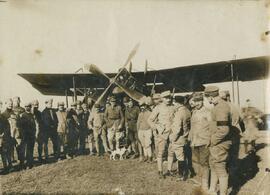IRAN - THE MAKING OF US POLICY, 1977-1980: papers from the US National Security Archive
- MFF11
- Collection
- 1943-1980
Iran: The Making of US Policy, 1977- 1980, is a themed microfiche collection which presents an integrated record of US foreign policy relating to Iran, 20 Jan 1977-29 Jan 1980. Included are memoranda, cabled messages, US embassy and consulate messages, Department of State reports, Central Intelligence Agency reports, US National Security Council reports and studies, and academic historical and political studies of the Middle East generally and Iran specifically, 21 Jan 1943-30 Apr 1980. Although the focus of this document set is on the 1977-1980 period, nearly one-third of the documents listed in the catalogue relate to the period prior to 1977. These are materials that were used in the preparation of the major internal inter-agency review of US-Iranian relations, the US Department of State 'White Paper'. The collection covers the beginning of the popular protests and mass demonstrations that resulted in the Iranian revolution of Feb 1979, which overthrew the pro-American monarchy of Mohammad Reza Pahlavi, Shah of Iran, and established the Islamic Republic of Iran. The collection also covers efforts by the US and the Iranian Provisional Government under Prime Minister Mehdi Bazargan to normalise relations between Iran and the US, which were frustrated by challenges from Islamic organisations including the Revolutionary Council. The collection records in detail the US reaction to the Iranian Constitutional Assembly, which pitted secular against religious forces during the drafting of the new constitution and which led to the formal establishment of a theocracy and the loss of Iran as a US strategic ally, Feb-Jun 1979. Documents include US Department of State report detailing the stability of Iran under the Shah and the effectiveness of SAVAK, the Iranian domestic and foreign intelligence agency, as a law enforcement agency, 28 Jan 1977; US Embassy, Teheran, Annual Policy and Resource Assessment report identifying US interests in Iran as stable, 4 Apr 1977; briefing paper for Cyrus Roberts Vance, US Secretary of State, for his first visit with the Shah, 30 Apr 1977; Central Intelligence Agency (CIA) report affirming the stability of the Iranian political regime, Aug 1977; US Department of State cables relating to the police suppression of anti-Shah demonstrations at Qom, the religious centre of Iran's Shiite community, and the resulting series of mass demonstrations against the Shah, Jan-Dec 1978; US Department of State inspection memorandum describing US relations with Iran as excellent, 4 May 1978; US Department of State memoranda concerning meeting of 13 May 1978, at which chief Iranian military and security personnel devised plans to deal with the rise of anti- government demonstrations, 23 May 1978; cable from William H Sullivan, US Ambassador to Iran, relating to the increasing dissent in Iran and the Shah's fears of the religious opposition to his monarchy presented by Ayatollah Ruhollah Khomeini, 1 Jun 1978; US Department of State airgram relating to meeting held between the Shah and Nasser Moghaddam, Director of SAVAK, in which the Shah ordered that all future demonstrations be broken up by force, 22 Jul 1978; US Department of State cable concerning the Iranian armed forces being put on alert in all major towns in Iran following a series of anti-government bombings, 14 Aug 1978; reports from the US Embassy, Teheran, relating to the 'Black Friday' massacre of anti-government protesters in Jelah Square, Teheran, 8 Sep 1978; US Department of State cable relating to riots in Teheran resulting in the destruction of Western businesses and the occupation of the British Embassy, Teheran, 5 Nov 1978; Central Intelligence Agency (CIA) report relating to the wave of anti-government protests in Iran during the spring of 1978, 5 Nov 1978; US Department of State cable from Ambassador Sullivan to the White House urging the US government to consider that the Shah may have to abdicate in favour of a coalition government, 9 Nov 1978; Central Intelligence Agency (CIA) profile of Khomeini describing him as the central figure in the anti-Shah movement and his proposed regime as xenophobic and hostile towards Western interests in the region, 20 Nov 1978; US Embassy reports to Washington, DC, relating to the Shah's departure from Iran, Jan 1979; US Department of State cables relating to the return of Khomeini to Iran from Paris, France, and his subsequent demands for the resignation of the Iranian Provisional Government, Feb 1979; US Embassy reports relating to the establishment of the Islamic Revolutionary Council under the leadership of Khomeini, Feb 1979; US Department of State cables relating to the deteriorating civil situation in Iran and growing anti-US sentiments, culminating in the seizure of the US Embassy, Teheran, and 66 of its employees, Feb-Nov 1979.



